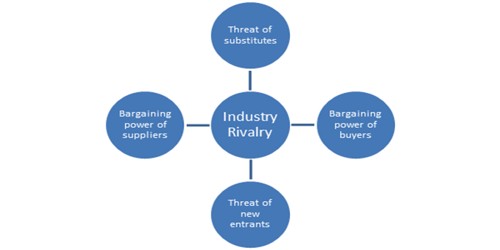Structural factors affecting Industry Rivalry
Industry rivalry or rivalry among existing firms – is one of Porter’s five forces used to determine the intensity of competition in an industry. If rivalry is fierce, then competitors are trying to steal profit and market share from one another.
A number of structural factors can affect industry rivalry:
- Numerous or equally balanced competitors
When there are many competitors, some companies believe that they can make competitive moves without being noticed. When companies are relatively balanced in strength, they are more likely to engage in competitive battles and attack and retaliate as they strive for market leadership.
- Slow industry growth
In a slow-growth market, companies can only grow by capturing market share from each other, which leads to increased competition.
- High fixed or storage costs
High fixed costs create pressure for all companies to full capacity, thus leading to price cutting when there is excess capacity. High storage costs push companies to decrease prices to ensure sales.
- Lack of differentiation or switching costs
When products are perceived as commodities, the choice is often determined by price and service, which then leads to increased competition in price and service.
- Capacity increased in large increments
When economies of scale require large increases in capacity, it causes disruptions in the industry supply/demand balance, which then leads to periods of overcapacity and price cutting.
- Diverse competitors
Companies with diverse strategies, origins, personalities, and relationships to parent companies (especially foreign competitors) also have different competitive goals and strategies than “typical” companies within the industry. Their diverse approaches to the market and unique competitive strategies can upset the status quo of doing business.
- High strategic stakes
Companies with, high stakes in achieving success may sacrifice profitability for expansion. Also, companies with high market share may feel threatened by competitors seeking to reduce their market share.
- High exit barriers
Economic, strategic, and emotional factors can prevent companies from leaving the industry, even when they are earning low or negative returns on investments. Major sources of exit barriers include:
- Specialized assets,
- Fixed costs of exit,
- Strategic interrelationships,
- Emotional barriers,
- Government and social restrictions.













